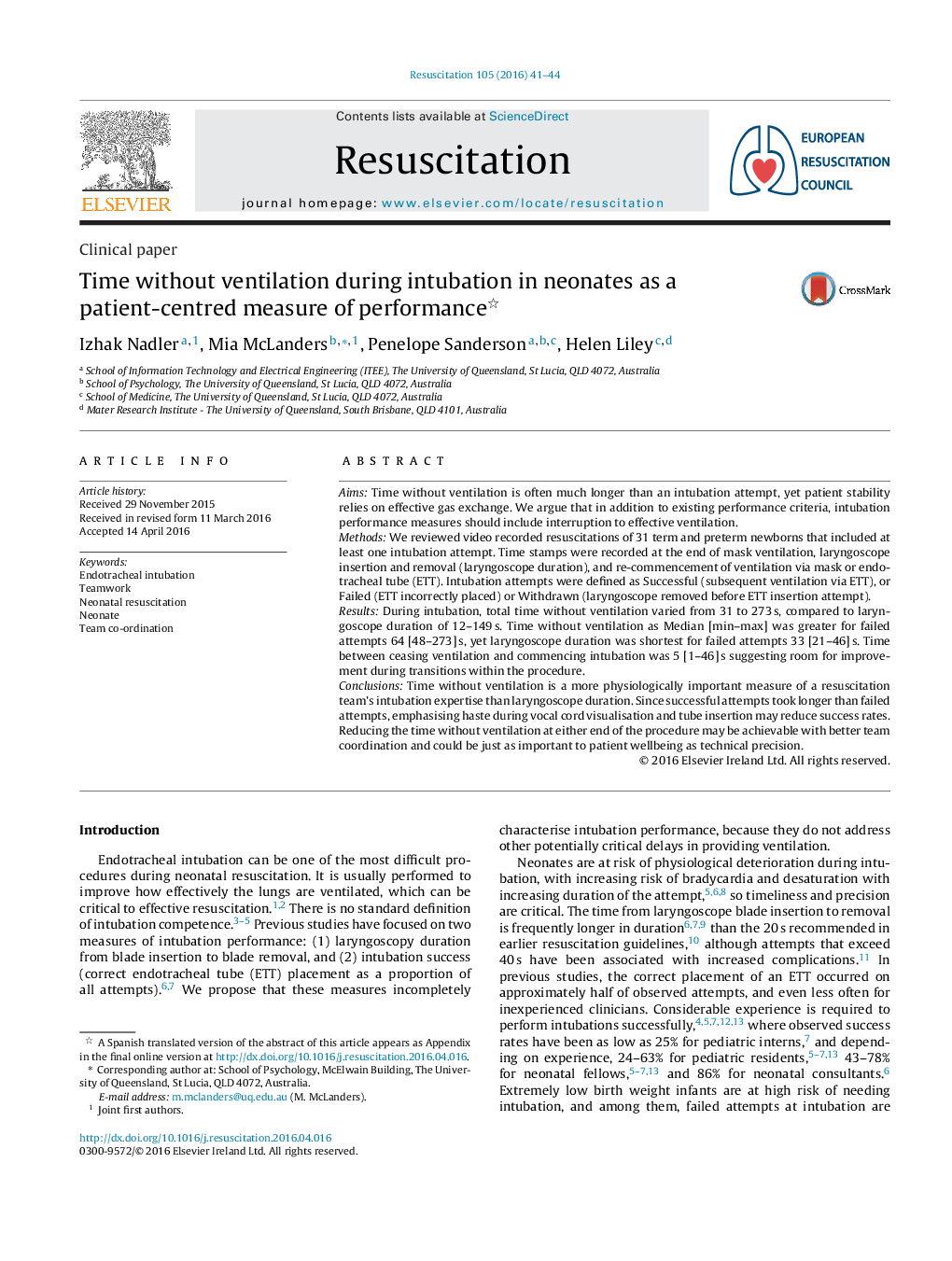| Article ID | Journal | Published Year | Pages | File Type |
|---|---|---|---|---|
| 5997140 | Resuscitation | 2016 | 4 Pages |
AimsTime without ventilation is often much longer than an intubation attempt, yet patient stability relies on effective gas exchange. We argue that in addition to existing performance criteria, intubation performance measures should include interruption to effective ventilation.MethodsWe reviewed video recorded resuscitations of 31 term and preterm newborns that included at least one intubation attempt. Time stamps were recorded at the end of mask ventilation, laryngoscope insertion and removal (laryngoscope duration), and re-commencement of ventilation via mask or endotracheal tube (ETT). Intubation attempts were defined as Successful (subsequent ventilation via ETT), or Failed (ETT incorrectly placed) or Withdrawn (laryngoscope removed before ETT insertion attempt).ResultsDuring intubation, total time without ventilation varied from 31 to 273Â s, compared to laryngoscope duration of 12-149Â s. Time without ventilation as Median [min-max] was greater for failed attempts 64 [48-273]Â s, yet laryngoscope duration was shortest for failed attempts 33 [21-46]Â s. Time between ceasing ventilation and commencing intubation was 5 [1-46]Â s suggesting room for improvement during transitions within the procedure.ConclusionsTime without ventilation is a more physiologically important measure of a resuscitation team's intubation expertise than laryngoscope duration. Since successful attempts took longer than failed attempts, emphasising haste during vocal cord visualisation and tube insertion may reduce success rates. Reducing the time without ventilation at either end of the procedure may be achievable with better team coordination and could be just as important to patient wellbeing as technical precision.
